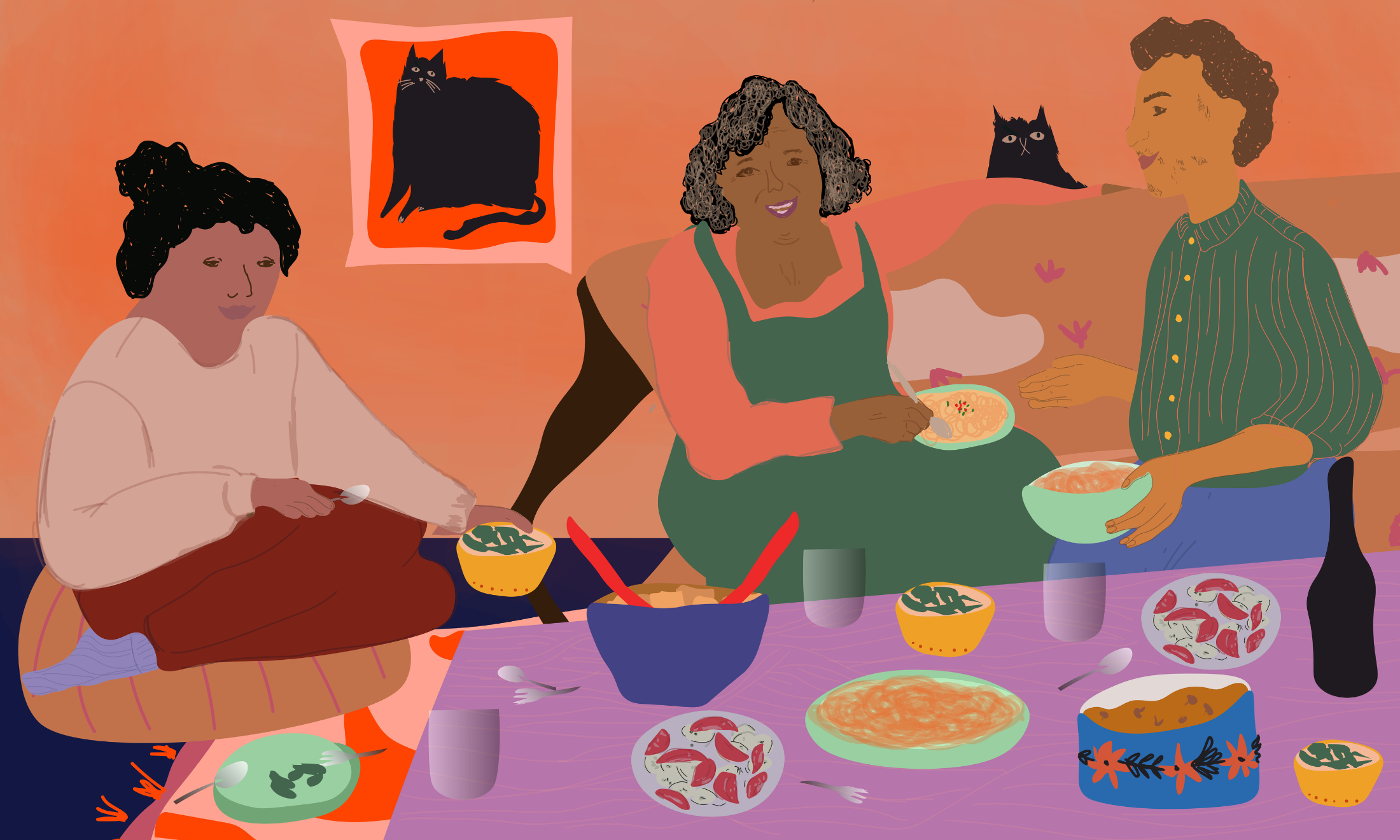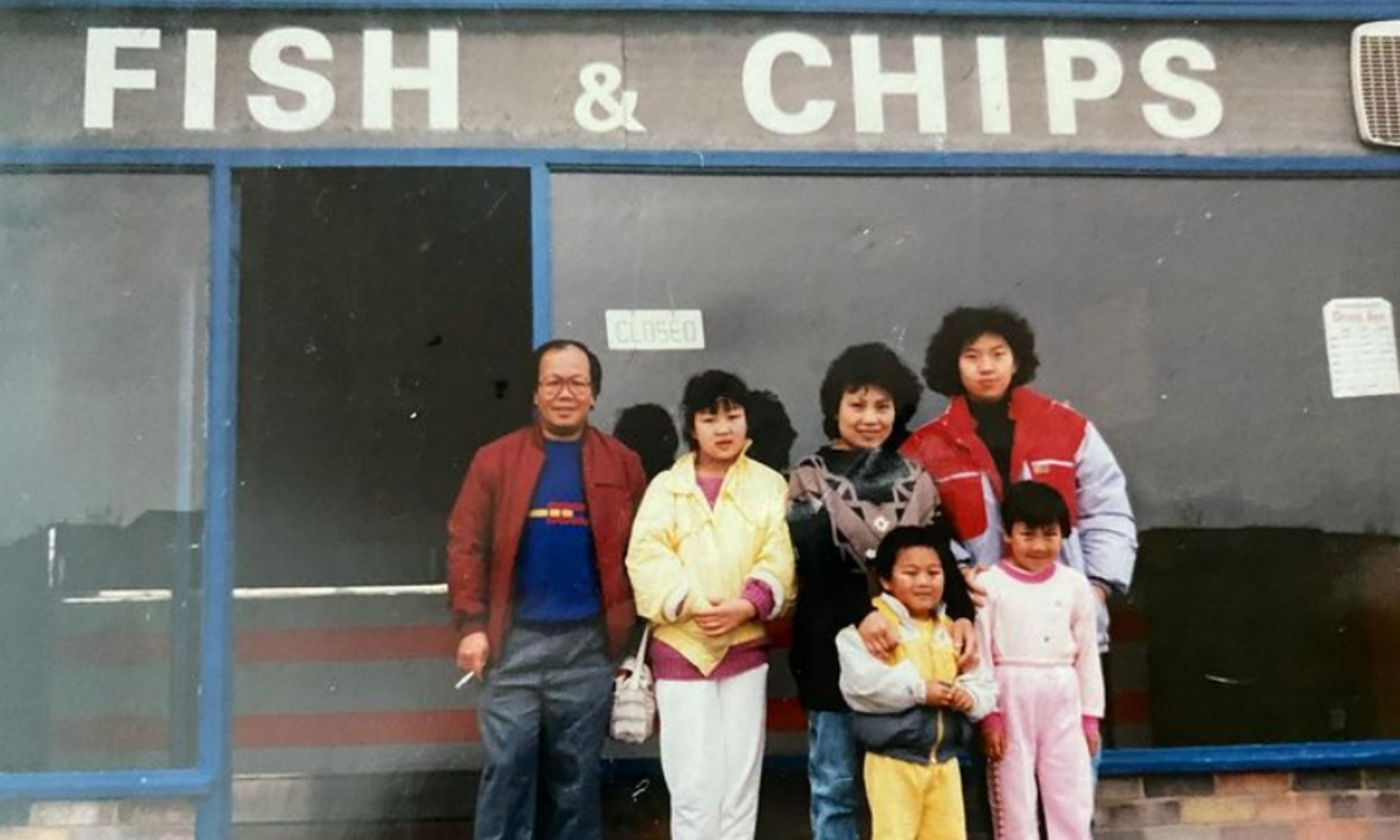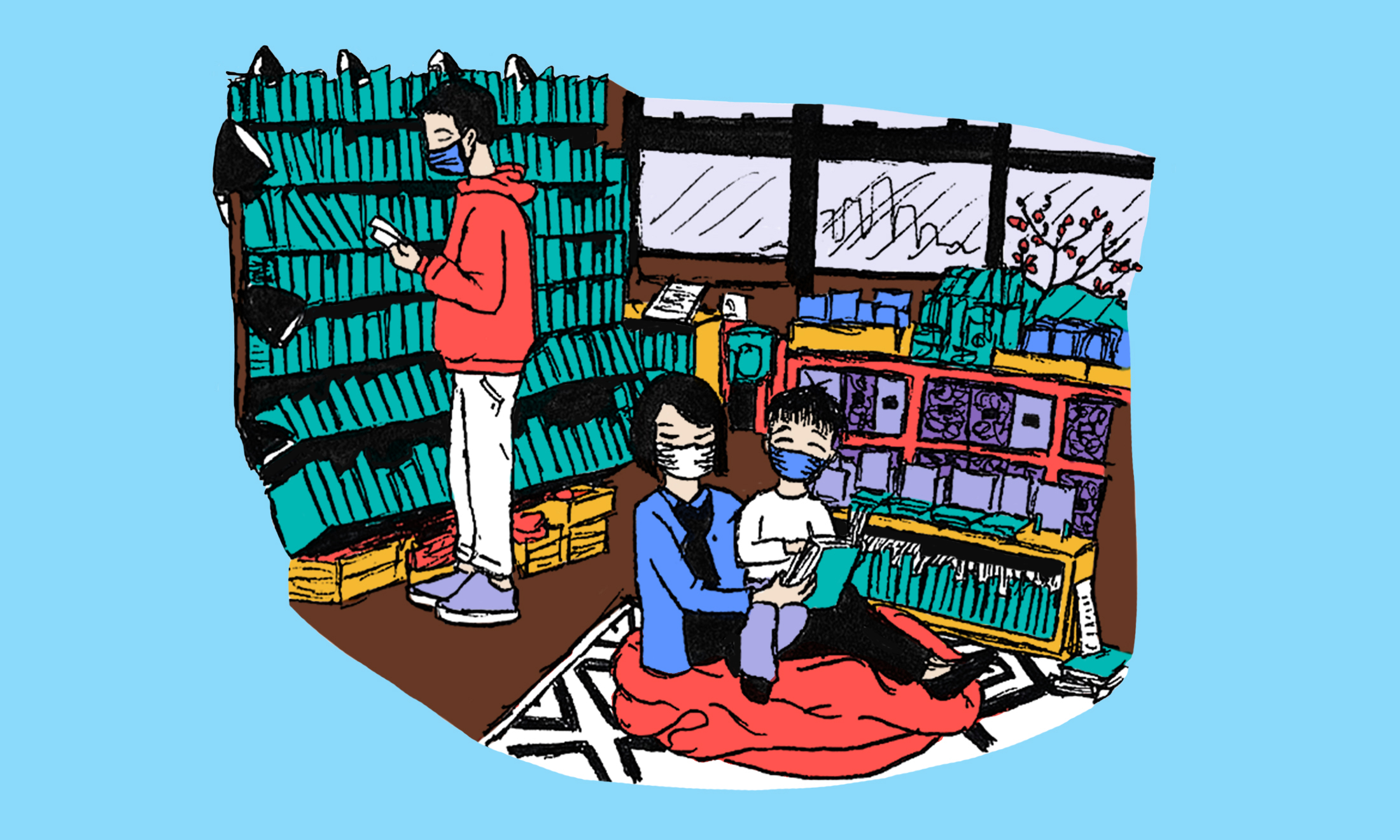
Amy Lo
Celebrating cha chaan tengs: the noisy and delicious heart of Hong Kong
This Lunar New Year, I’m paying homage to sights, sounds and tastes of the Hong Kong eatery from afar.
Amy Lo
01 Feb 2022
I don’t know why I was scanning through the laminated menu of options when I already knew what I would have. I picked up a pair of chopsticks out of the tin in the middle of the table and waited for the lovely a-sum (‘aunt’ in Cantonese, but you use it like ma’am) to come over to take my order of beef satay noodles and a milk iced tea. My favourite, timeless, classic cha chaan teng meal.
A cha chaan teng is a staple in Hong Kong and translates as a ‘tea restaurant’ in Cantonese. I always describe them as a Hong Kong version of a greasy spoon here in the UK: they’re cheap, cheerful, and an integral part of the Chinese community. From business workers with their briefcases and construction workers in their overalls grabbing a quick lunch before heading back to work, to parents having an after-school snack with their kids and tourists photographing the ceiling fans and retro mugs – every thread of Hong Kong society scooches up into booths to have an affordable and reliable meal.
“A cha chaan teng is a staple in Hong Kong and translates as a ‘tea restaurant’ in Cantonese”
Cha chaan tengs started to crop up and became popular in the 1950s and 1960s while Hong Kong was still a British colony, as local business owners in working-class areas wanted to provide affordable Western-inspired food in a casual setting. Before their emergence, eating in a Western restaurant was a luxurious experience reserved for the upper class. But after the Second World War, British influences increasingly entered wider Hong Kong society and culture. Before, dairy wasn’t used much in Cantonese cuisine, as a high proportion of Chinese people are lactose intolerant. But with a Western influence, milk was added to tea (traditionally served without) and was being used in cakes as they became more popular. Thus, the very beginnings of the cha chaan teng were born. It’s fusion cooking in the simplest form.
These cafes are noisy, with customers chatting away at full volume and dishes clattering together as they’re cleared. It’s no fuss, and if you’re looking for a fine dining experience, then you’ve come to the wrong place. What it is, though, is comforting. I love that you can walk into any cha chaan teng and order a staple dish without even looking at the menu, just like you can go to a café in Britain and order any combination of a fry up. The ladies working there greet you with nicknames that are akin to ‘love’ and ‘darling’ over here, and a sense of warmth grows within when they call me ‘mui mui’ (which means ‘little sister’ in Cantonese).
“If you’re looking for a fine dining experience, then you’ve come to the wrong place. What it is, though, is comforting”
In 2007, there was a proposal for cha chaan tengs to be listed in the UNESCO Intangible Cultural Heritage Lists because of their essential role in Hong Kong society. While they weren’t added to the list, in 2014, the first Intangible Cultural Heritage Inventory of Hong Kong included several famous cha chaan teng dishes, including Hong Kong milk tea, pineapple buns and egg tarts. One of my favourite dishes is spam and macaroni soup. The pairing may sound odd, but the hot, steaming broth, along with the crispy and salty slices of fried spam topped with a fried egg, is the ultimate comfort food (and my go-to hangover cure). Now I often make the dish myself in my flat in south-east London to warm me up at the weekends, and it transports me straight back to a balmy Hong Kong.
“The hot, steaming broth, along with the crispy and salty slices of fried spam topped with a fried egg, is the ultimate comfort food”
My parents migrated separately to the UK during the 1960s, and while I was growing up, we would spend our summer holidays in the outskirts and countryside of Hong Kong. I made my first trip there when I was only two years old as they wanted me to stay in touch with my Chinese heritage, even though I was growing up in Western society. We’d take the bus into Kowloon to go yum cha (which means ‘drink tea’ but is going for dim sum) with relatives and walk along with the bright lights of the Ladies’ Market. But it’s the cha chaan tengs that capture the memories of Hong Kong for me, 20 years on from when I first visited the city.
“It’s the cha chaan tengs that capture the memories of Hong Kong for me, 20 years on from when I first visited the city”
As I grew older, I started travelling to see more of the world with friends, and Hong Kong got pushed to the bottom of the list. I almost resented it during my teenage years as I found it a chore to go there so often that I was missing out on going to other places. But nearly a decade on from when I last visited Hong Kong, I went there on holiday with my boyfriend in 2018, and I hadn’t realised how much I’d missed it. It felt like home, and I loved showing him all the places that were familiar to me. Of course, the first place I took him to was a cha chaan teng.
I excitedly ordered all the staples for him, including a Hong Kong milk iced tea. It might look like a brew you’d have here, but it’s made with condensed milk and is a sweet and refreshing treat. A Hong Kong club sandwich is a must, as is the French toast, which translates to ‘western toastie’ and features peanut butter sandwiched in the middle. As he struggled to make choices from the menu, I pointed out there were trusty set menus, and he was gobsmacked that it cost $39 Hong Kong dollars for toast, an omelette, noodles and a drink, working out to about £3.60 for all that.
This Lunar New Year, I’m missing the bustling and delicious setting of a cha chaan teng more than ever. Due to the pandemic, Hong Kong has all but closed its borders for the past two years. And while I wait to return to order my trusty egg tart and tea, I’ll carry on cooking macaroni soup to bring Hong Kong to me.









